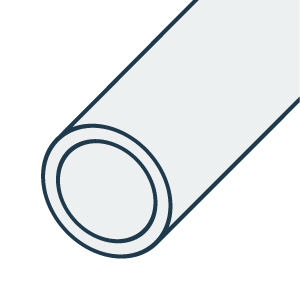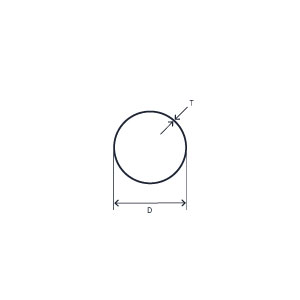Allt när det gäller stål och metaller


- Enhet
- Antal
-
- Radmärke
Vill du bli kund?
Ansök om kundkontoProduktinformation
Austenitic steels with designations 1.4301 and 1.4307 are the commonest stainless types and contain about 18% chromium and 9% nickel. The difference between the two grades is that in 1.4301, the maximum allowed carbon content is higher than for 1.4307 which can mean that 1.4301 has marginally higher strength. In practice, the difference in carbon between 1.4301 and 1.4307 is often of little significance. However, if welding is to be performed, 1.4307 is the preferred choice since corrosion resistance in the vicinity of the weld could be impaired for 1.4301.
Flat bars of stainless steel of lesser thickness are difficult to roll and it is usually more efficient to convert hot-rolled strip to bar format via slitting. As hot-finished plate, grades 1.4301/1.4307 are standardised in EN 10088-2. Tibnor’s programme of stainless flat bars based upon slitting from plate covers the range 3-12 mm thickness with widths up to and including 150 mm.
Grades 1.4301 and 1.4307 show good resistance to corrosion in neutral water both indoors and outdoors. The steels also exhibit immunity from atmospheric corrosion. However, these stainless grades are less suitable if the environment is acidic or contains chlorides. In such instances, higher alloyed grades are needed.
The formability of flat bars of both 1.4301 and 1.4307, even when manufactured by slitting of strip, is in most cold-forming operations excellent and often better than hot-rolled carbon steel. Both grades are also characterised by very good weldability and they seldom give rise to any problems in fabrication of welded structures. Machining, on the other hand, can pose difficulties but is facilitated via use of bespoke tooling.
The hot-finished sheet in 1.4301/1.4307 used as starting material for slitting of flat bars has surface finish 1D (annealed and with surface oxide removed by pickling) and so the wide face of the bars has the same finish. The side faces have a typical slit appearance and small burrs can be encountered. Thickness and width have plus/minus tolerances as defined in EN 10058. Straightness expressed as height of arc is at most 0.004 times the bar length.

